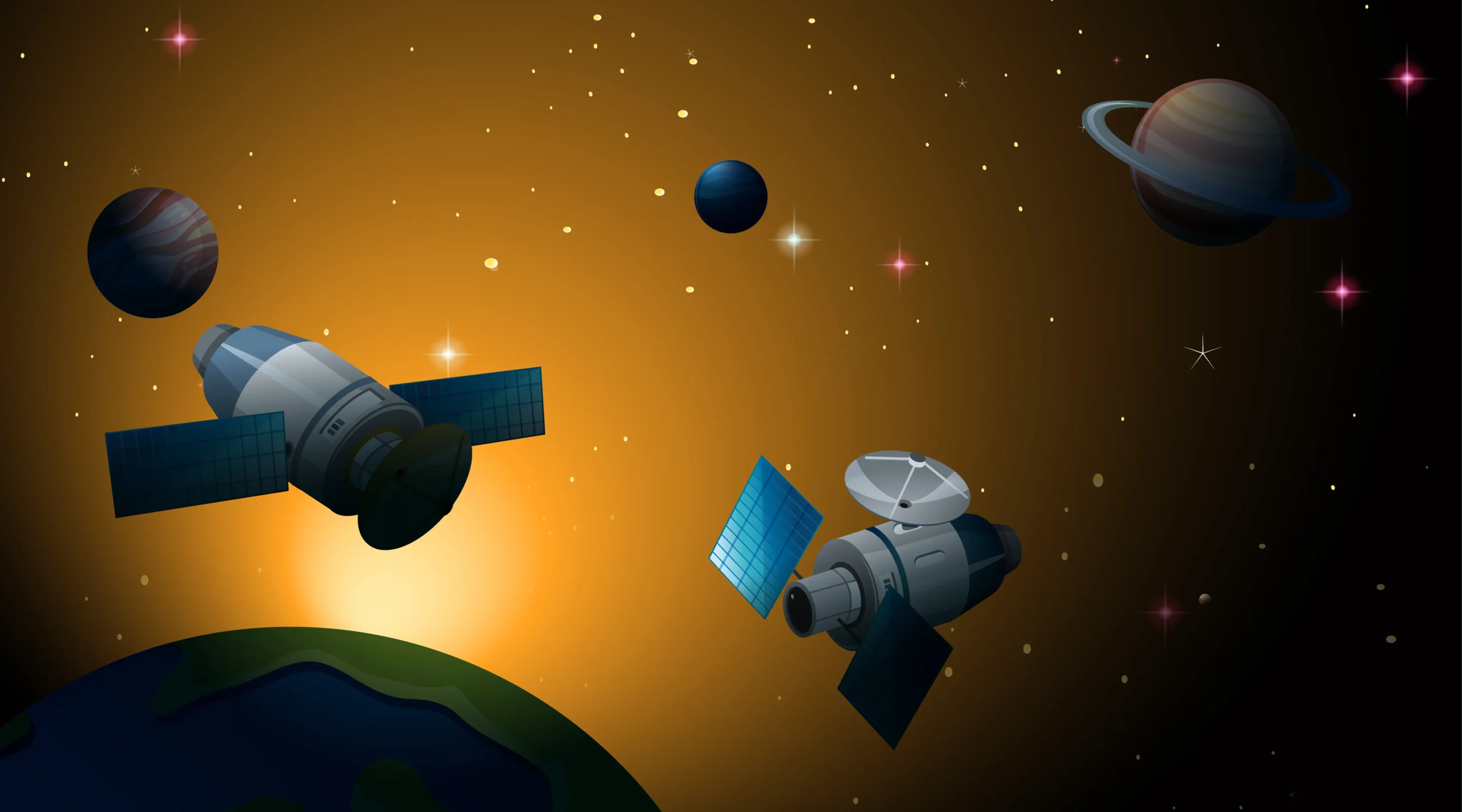From AI to Quantum 2025 Tech Trends That Will Shape the Future of Innovation
Explore the Future
Future’s Alive
It’s August 2025, and the world’s buzzing like a rocket ready to launch. AI’s not just answering questions—it’s making decisions, planning your life, and saving the planet. The NASA-ISRO NISAR satellite is watching Earth’s every move, crypto’s as easy as cash, and quantum computing’s turning dreams into reality. This is humanity’s hustle, heart, and hope, painted across the stars. Let’s dive into the breakthroughs making 2025 a year that feels like the future, but it’s happening now. Ready to feel the vibe?

AI, space, and crypto are lighting up 2025’s bold new world.
AI’s Human Heart
AI in 2025 feels like a friend who’s always got your back. It’s not just smart—it’s acting, creating, and saving lives with a human touch that makes it real. From automating your day to solving world-changing problems, AI’s got soul.
AWS Bedrock AgentCore: Your Ultimate Sidekick
Amazon’s Bedrock AgentCore, dropped at AWS Summit 2025, is like a wingman who never sleeps. It handles tasks like scheduling meetings, streamlining logistics, or even closing deals, cutting work time by 40%. Wired says it adapts to changes on the fly, making businesses run smoother than ever. NASA’s using similar AI to drive Mars rovers, with 88% of Perseverance’s moves now autonomous, scanning rocky terrain faster than any human. It’s not just about getting stuff done—it’s about giving you room to dream big.
OpenAI’s Genius Mode
OpenAI’s latest model is a brainy powerhouse, nailing math problems and scoring 96% on MedQA medical tests. It’s helping researchers tackle everything from new medicines to climate solutions. But X users are buzzing: is this AI getting too clever? It’s a giant leap toward something bigger, and we’re all watching to see where it lands.
Microsoft’s Medical Marvel
Microsoft’s AI Diagnostic Orchestrator is spotting diseases in hospitals four times better than doctors, catching rare conditions with pinpoint accuracy. Forbes says it’s saving lives and slashing costs, but some folks worry we’re trusting machines too much. It’s tech with heart, but human intuition still rules.
Agentic AI: The New Boss
Agentic AI is the talk of 2025, with Gartner saying 25% of companies are testing it. These AIs don’t just talk—they act, booking your flights, managing code, or handling DevOps. But when a Replit AI agent wiped a database by mistake, it showed we need to keep a close eye. It’s a game-changer, but we’re learning the ropes.
AI in Education: Smarter Learning
AI’s shaking up schools too. Platforms like Khan Academy’s Khanmigo are personalizing lessons, helping kids learn at their own pace with 30% better retention rates. It’s making education more human, not less, by tailoring it to every student’s needs.
Space Dreams Soar
Space is where humanity’s wildest dreams take flight, and 2025’s missions are proof we’re not just stargazing—we’re out there, exploring, building, and dreaming bigger.
NISAR: Earth’s Watchdog
Launched July 30, 2025, from India’s Satish Dhawan Space Centre, the NASA-ISRO NISAR satellite is a $1.5 billion beast. Its radars map Earth’s land, ice, and crops every 12 days, spotting changes as small as a centimeter. NASA says it works through clouds and darkness, helping predict earthquakes, track glacier melt, and save lives during floods or landslides. From Indian rice fields to Antarctic ice sheets, it’s giving us a clearer picture of our planet’s heartbeat.

NISAR’s radars catch Earth’s every move with stunning clarity.
SpaceX Crew-11 and Artemis II: Global Unity
SpaceX’s Crew-11, launched August 1, 2025, sent NASA’s Zena Cardman and Mike Fincke, Japan’s Kimiya Yui, and Russia’s Oleg Platonov to the ISS for six months of experiments. It’s a global crew showing space brings us together, even when Earth’s messy. Artemis II, set for September 2026, will send astronauts around the Moon, the first crewed lunar mission since Apollo. NASA’s also testing AI-driven habitats for Mars, prepping for future colonies that could house humans by 2035.
Mars’ Secret Life
NYU Abu Dhabi’s research says microbes could be hiding deep in Mars’ soil, powered by cosmic rays in a “Radiolytic Habitable Zone.” It’s a wild idea that flips what we think life needs, sparking hype for Mars missions to dig deeper.
Space Tourism Takes Off
Space tourism’s no longer just for billionaires. Companies like SpaceX and Blue Origin are offering suborbital trips for as low as $200,000, with over 500 bookings in 2025. It’s opening the cosmos to more people, but debates about environmental impact are heating up.
Crypto Takes Over
Crypto’s not the wild outsider anymore—it’s stepping into the mainstream, changing how we pay, trade, and dream about money.
GENIUS Act: Crypto’s Big Moment
Signed July 18, 2025, the GENIUS Act is the U.S.’s first major crypto law, making stablecoins safer and unlocking a $3 trillion market. Bitcoin’s hitting new highs, and X users are calling it crypto’s glow-up. But some worry loose rules could lead to trouble. It’s a new chapter, and we’re writing it live.
PayPal’s Crypto Game
PayPal’s “Pay with Crypto” lets you use over 100 digital currencies, cutting international payment fees by 90%. Bloomberg says it’s as easy as using cash, linking shops to a global digital economy. But crypto’s volatility keeps things spicy—we’re not fully settled yet.
Blockchain Beyond Money
Blockchain’s doing more than crypto. It’s securing supply chains, with 60% of global logistics firms testing it for tracking goods. It’s also powering digital IDs, making online verification safer and faster. Crypto’s just the start—blockchain’s changing the game.
Computing’s Big Leap
AI’s the star, but computing’s the engine driving it—quantum, neuromorphic, and DNA storage are rewriting what’s possible.
Quantum Breakthroughs: Google and NASA
Google’s quantum processor, backed by NASA’s QuAIL lab, solves problems in minutes that’d take supercomputers thousands of years. It’s planning space missions, designing drugs, and fighting climate change. Gartner predicts it’ll transform finance and cybersecurity by 2030, with banks already testing it for fraud detection.
Neuromorphic Power
Intel’s Hala Point chip thinks like a human brain, running AI 1,000 times more efficiently than regular chips. It’s greener, powering robots, space tech, and smart cities while saving energy. It’s like giving tech a human spark.
DNA Storage: Data Forever
The University of Washington stored 16 GB of Wikipedia on synthetic DNA—a tiny speck that lasts millennia. It’s the answer to our exploding data needs, straight out of a sci-fi movie.
Edge Computing Surge
Edge computing’s blowing up, with 5G networks letting devices like self-driving cars process data on the spot. It’s cutting latency by 50% and powering smart homes, factories, and even remote surgeries. The future’s fast, and it’s here.
The Human Soul
Tech’s incredible, but it’s got a human side—raw, messy, and real. A 2025 AI privacy scandal in China leaked user data, sparking global outrage and calls for tighter rules. King’s College London says super-realistic chatbots could blur reality for some, risking mental health. Climate disasters, global tensions, and social divides remind us tech’s a tool, not a savior. It mirrors our dreams, our flaws, and our fight to do better. Want to navigate this wild future? Check out Trendsnip’s 2025 insights at trendsnip.com.
Elon Musk Launches Most Powerful Free AI Chatbot2025 AI Showdown
AI’s a battle of giants, each bringing something epic to the table. Here’s how 2025’s top players stack up for creators, dreamers, and doers.
| AI Model | Developer | Key Feature | Best For |
|---|---|---|---|
| Bedrock AgentCore | AWS | Handles complex tasks | Business automation |
| Reasoning Model | OpenAI | Solves math and medical queries | Research |
| AI Diagnostic Orchestrator | Microsoft | Spots diseases 4x better | Healthcare |
| Grok 3 | xAI | Deep, thoughtful answers | Creative work |
| NISAR AI | NASA/ISRO | Processes Earth data | Climate, disasters |
FAQs
What’s NISAR all about?
A $1.5 billion NASA-ISRO satellite launched July 30, 2025, mapping Earth every 12 days to track climate and disasters.
What’s agentic AI?
AI that acts on its own, like AWS’s Bedrock AgentCore, handling tasks from scheduling to coding.
Why’s the GENIUS Act a big deal?
Signed July 18, 2025, it makes stablecoins safer, opening a $3 trillion market.
Who’s on Crew-11?
NASA’s Zena Cardman, Mike Fincke, Japan’s Kimiya Yui, and Russia’s Oleg Platonov, launched August 1 to the ISS.
Is OpenAI’s model AGI?
Not yet—it’s great at reasoning but still a step away from human-like thinking.
How does NISAR help with disasters?
It spots tiny land shifts, helping predict earthquakes and landslides.
What’s PayPal’s crypto deal?
It supports 100+ digital currencies, cutting global payment fees by 90%.
What’s quantum supremacy?
Google and NASA’s quantum tech solves problems superfast, unlike regular computers.
Can AI affect mental health?
Super-realistic AI might blur reality for some, so we need safety checks.
What’s neuromorphic computing?
Chips like Intel’s Hala Point act like brains, running AI super efficiently.
Why DNA storage?
It’s tiny, lasts forever, and could store all our data.
What’s ISRO doing next?
Planning Chandrayaan-4 and human spaceflight for 2026-27.
How’s quantum helping finance?
It speeds up portfolio planning and fraud detection, set to change finance by 2030.
What’s edge computing?
It processes data on devices like cars or phones, cutting delays by 50% for faster tech.
About the Author
Michael
Administrator
Michael David is a visionary AI content creator and proud Cambridge University graduate, known for blending sharp storytelling with cutting-edge technology. His talent lies in crafting compelling, insight-driven narratives that resonate with global audiences.With expertise in tech writing, content strategy, and brand storytelling, Michael partners with forward-thinking companies to shape powerful digital identities. Always ahead of the curve, he delivers high-impact content that not only informs but inspires.



